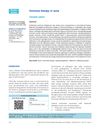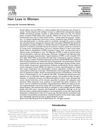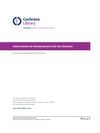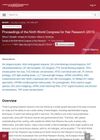My mum, 68. She has decided enough is enough and wants to get some hair back. Female 1/31/2025
A 68-year-old woman with iron deficiency and hypertension is considering using 5% minoxidil for hair regrowth and plans to see a dermatologist. Some suggest using wigs and focusing on health, while others recommend checking for hormone imbalances and nutritional deficiencies.
View this post in the Community →
Similar Community Posts Join
5 / 1000+ resultscommunity It’s over. NOTHING has worked.
A user who has been trying various treatments for hair loss for four years, with no success. Suggestions include use of minoxidil, finasteride, RU58841, microneedling, supplements and multivitamins, lifestyle changes, scalp biopsy, and SMP.
community Could low blood flow to the head cause an increased rate of thinning?
The user started using finasteride, minoxidil, and biotin for male pattern baldness (MPB) and is experiencing rapid thinning. They are questioning if low blood flow to the head could be contributing to their hair loss.
community Low iron and hair loss connection
A 39-year-old woman noticed hair thinning and found she has an iron deficiency, which may be linked to hair loss. Suggestions included seeing a dermatologist, using spironolactone, and minoxidil.
community Should I start using min if my hair loss is caused by low ferritin / iron deficiency?
A 24-year-old woman experiencing hair loss due to low ferritin and iron deficiency is advised to correct these deficiencies before considering minoxidil. Minoxidil is not recommended for temporary hair loss caused by iron deficiency.
community My dermatologist said I have female pattern hair loss, now my hair is fully grown back.
A user with female pattern hair loss who tried minoxidil and various oils and supplements, but saw results only after taking iron tablets. The conversation also offered advice to get blood tests done to see if there are underlying issues causing the hair loss.
Related Research
6 / 1000+ results
research Hormone Therapy in Acne
Hormonal treatment is effective for women with acne not helped by usual treatments, especially if they have hormonal imbalances.

research Hair Loss in Women: Comprehensive Overview and Treatment Options
Effective hair loss treatment in women requires correct diagnosis and can include medications like minoxidil, antiandrogens, and treatments for underlying conditions like PCOS.

research Interventions for Female Pattern Hair Loss
Topical minoxidil helps treat female pattern hair loss, but more research needed for other treatments.

research Current Trends in Hair Care in Men
Proper hair care and suitable products are essential for men's scalp health and well-being.

research Proceedings of the Ninth World Congress for Hair Research 2015
The 2015 Hair Research Congress concluded that stem cells, maraviroc, and simvastatin could potentially treat Alopecia Areata, topical minoxidil, finasteride, and steroids could treat Frontal Fibrosing Alopecia, and PTGDR2 antagonists could also treat alopecia. They also found that low-level light therapy could help with hair loss, a robotic device could assist in hair extraction, and nutrition could aid hair growth. They suggested that Alopecia Areata is an inflammatory disorder, not a single disease, indicating a need for personalized treatments.
research Safety and Efficacy of ALRV5XR in Women with Androgenetic Alopecia or Telogen Effluvium: A Randomised, Double-Blinded, Placebo-Controlled Clinical Trial
ALRV5XR significantly improves hair density in women with hair loss and is well-tolerated.